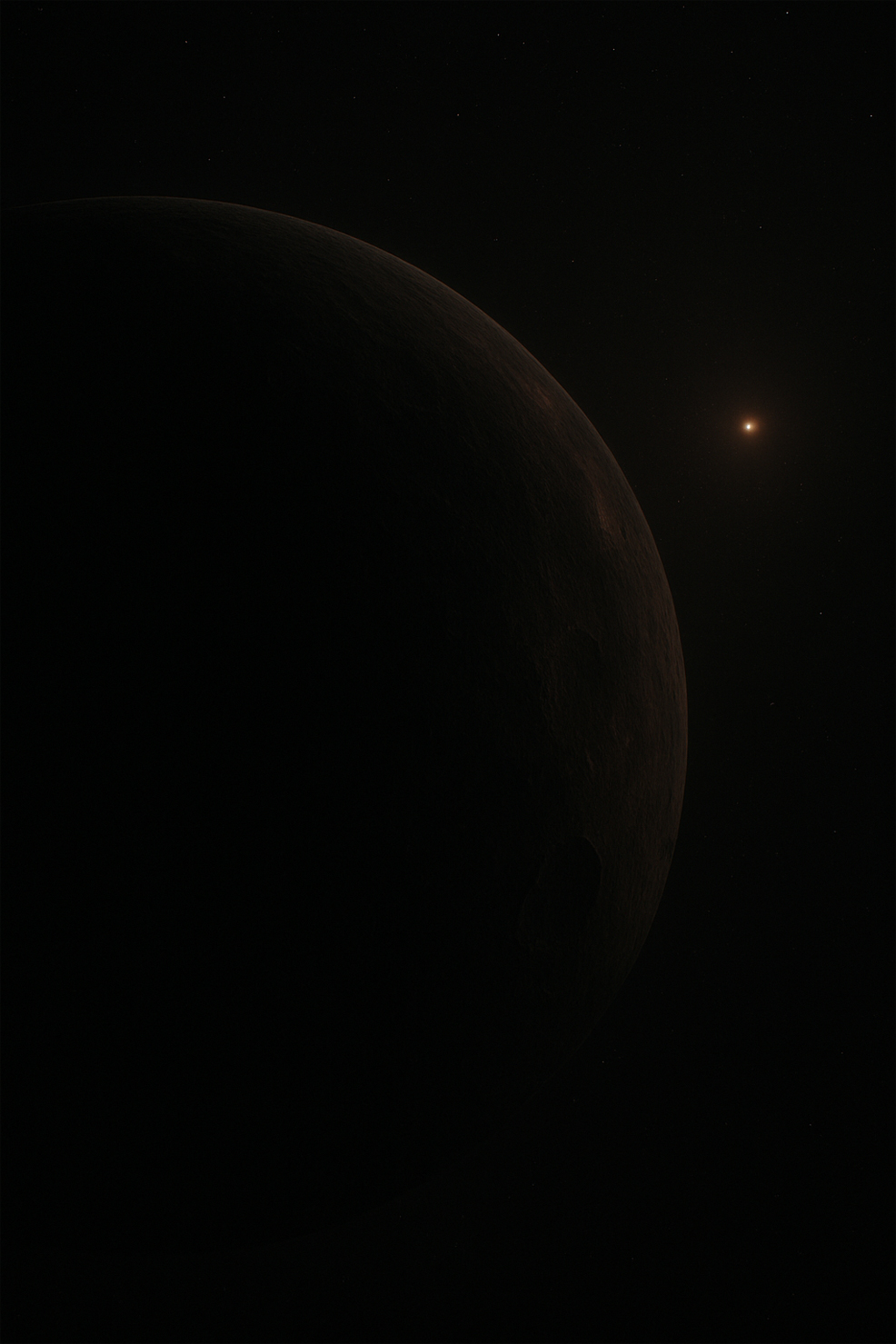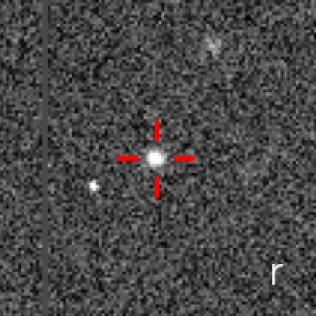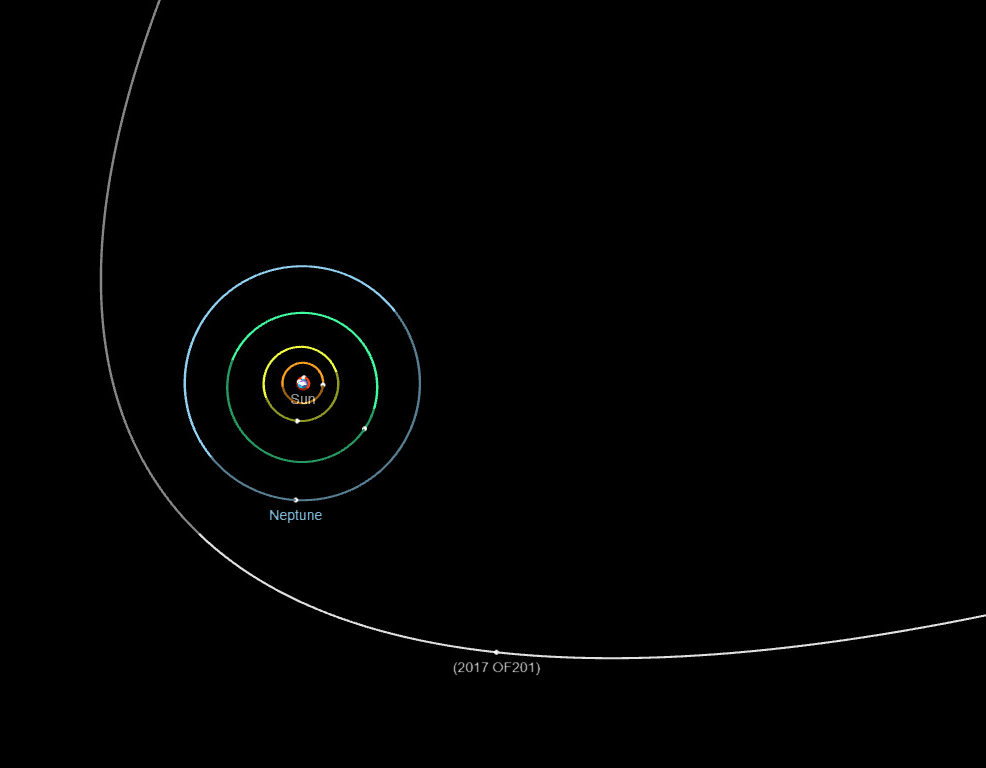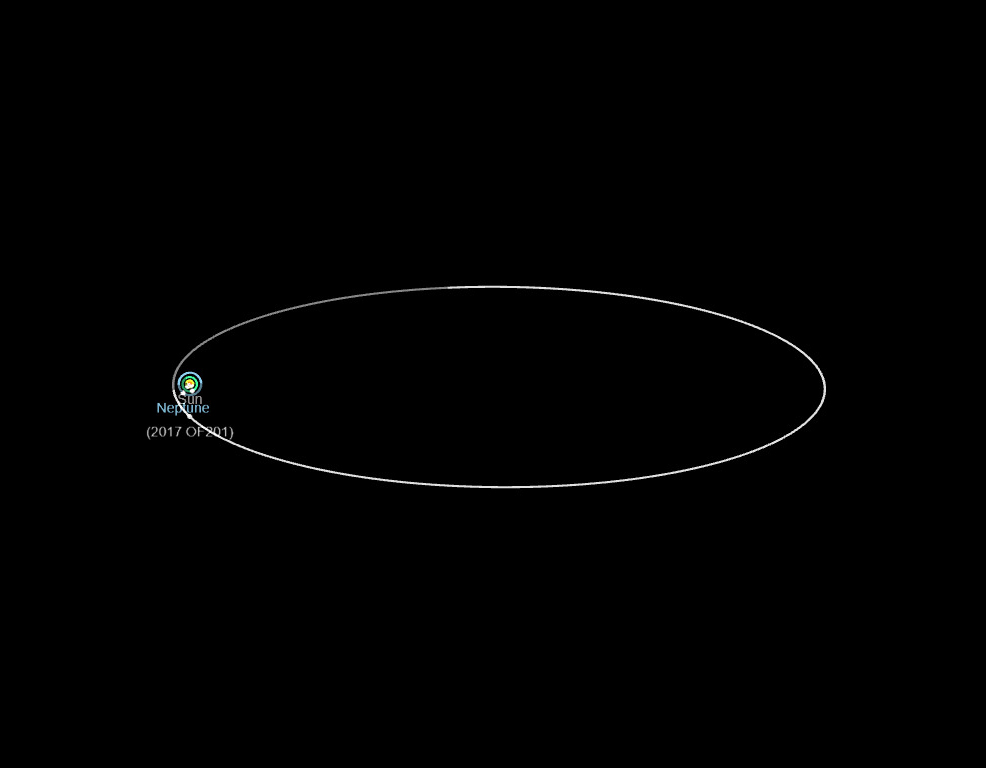
26th May 2025 New dwarf planet candidate discovered Astronomers have identified 2017 OF201, a distant celestial body with an extreme 25,000-year orbit, potentially expanding our understanding of the Solar System's outer frontier.
In a remarkable find, astronomers have announced the detection of 2017 OF201, a trans-Neptunian body that may qualify as a possible dwarf planet. This object lurks beyond Neptune, following an extremely elongated path, taking 25,000 years to complete one orbit around the Sun. At its closest approach, 2017 OF201 lies 45 astronomical units (AU) from the Sun, a distance similar to Pluto. At its furthest point, however, it ventures out to a staggering 1,630 AU. Its current distance from the Sun is 90.5 AU. A team led by Sihao Cheng at New Jersey's Institute for Advanced Study made the discovery using archival data from the 4-metre Blanco telescope in Chile and the 3.6-metre Canada-France-Hawaii Telescope. Cheng and his colleagues tracked the object across 19 sets of images spanning seven years, which allowed them to determine its orbit and estimate its size.
The astronomers estimate that 2017 OF201 is around 700 kilometres in diameter, large enough to qualify as a dwarf planet. Photometric data indicate it has a reddish hue, similar to Sedna. It also has minimal brightness variability, implying a near-spherical shape, although more detailed observations will be needed to confirm this. Its highly eccentric orbit suggests that gravitational interactions with Neptune or possibly even the Milky Way's galactic tides influenced its current trajectory. Some models suggest the object may have been flung into the Oort Cloud and eventually migrated back to a more Sun-bound orbit.
The research findings appear in a preprint paper uploaded to arXiv this month and have not yet undergone peer review. As such, the scientific community has not formally validated the data through a standard publication process. The International Astronomical Union's Minor Planet Center has acknowledged the discovery, but has not yet confirmed 2017 OF201 as a dwarf planet. Interestingly, the orbit of 2017 OF201 does not match the clustering seen in other extreme trans-Neptunian objects, previously cited as evidence for a mysterious "Planet Nine". This discrepancy challenges the Planet Nine hypothesis and suggests a need to revise current understandings of outer Solar System dynamics. The detection of 2017 OF201 is a reminder of the vast, uncharted regions that lie cloaked in the darkness beyond Neptune. Objects like these spend only a small fraction of their orbits close enough to Earth to be seen, suggesting that many more distant bodies remain undiscovered. As telescopes and observation methods continue to improve, astronomers anticipate uncovering more hidden worlds – not only revealing deeper insights into the evolution of our Solar System, but also helping to map its more remote and elusive regions. "2017 OF201 spends only 1% of its orbital time close enough to us to be detectable," said Cheng. "The presence of this single object suggests that there could be another hundred or so other objects with similar orbit and size; they are just too far away to be detectable now."
Comments »
If you enjoyed this article, please consider sharing it:
|
||||||










